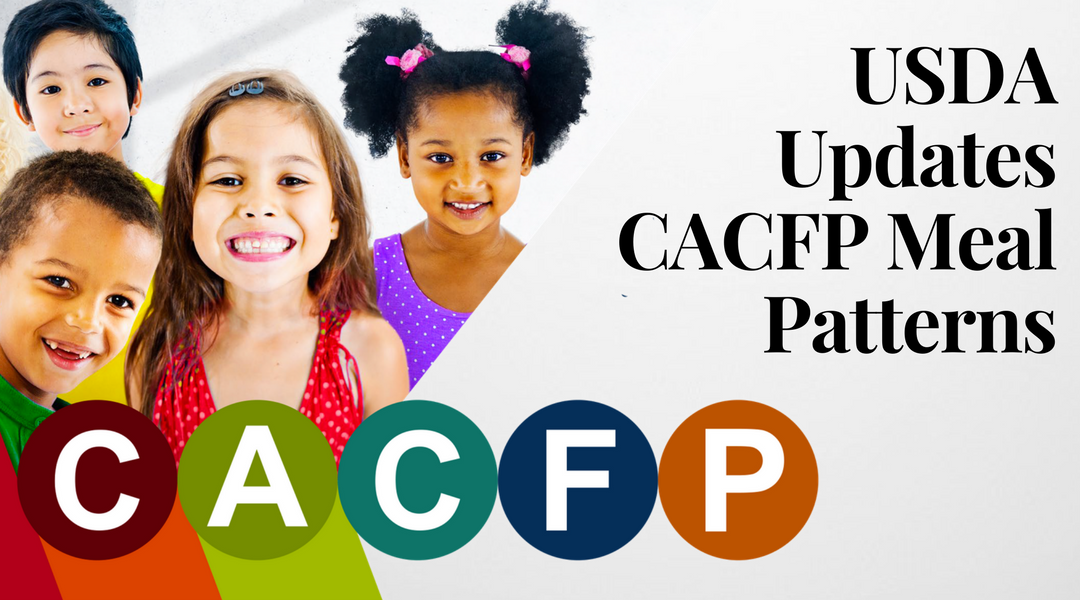On April 25, 2016, the USDA Food and Nutrition Service set forth new guidelines for the CACFP meal patterns for schools, going into effect October 1, 2017. Recently, the USDA issued a memo offering a transition period of one year for schools to adapt to the new guidelines so schools and districts can receive the training needed to become compliant.
This CACFP meal patterns transition eases the burden on CNP (Child Nutrition Program) operators, allowing sufficient time to “focus on providing technical assistance related to the updated requirements, and therefore remedy non-compliance as best as possible.” This basically means there will not be fiscal action as long as the provider is moving toward compliance “in good faith.” There is time to consider what has to be changed and how to implement those changes, monitor the results and train everyone involved.
The updated CACFP meal patterns are based on recommendations from the National Academy of Medicine, the American Academy of Pediatrics, and stakeholder input, which support a wider variety of fresh fruits and vegetables, a decrease in added sugars, more whole grains, and less saturated fat. While these changes seem like common sense on the outside, the implementation of such changes may be a significant challenge for foodservice operators who are unfamiliar with new terminology and documentation. Some specific changes are the separation of the fruit and vegetable lunch requirements, use of the new “Whole Grain Rich ounce equivalents” terminology in identifying acceptable grains, limits on yogurt and cereal sugar levels, and the recently updated “co-mingled meal service” with students of different ages.
With Health-e Pro, our system is built to simplify the menu process, especially for those unfamiliar with changing regulations. Our color-coding cues and standards checklist help foodservice directors and operators get immediate feedback on compliance as they plan and write their menu. Taking it a step further, Health-e Pro personal training helps those unfamiliar with the rules write recipes that are compliant and helpful to kitchen staff. “When Healthy, Hunger Free Kids Requirements first came out, Health-e Pro was there to assist child nutrition professionals understand the changing requirements and implement their menus using the new requirements. Now, a similar opportunity exists for those in CACFP meal patterns this year. Because there is flexibility for implementation, we can help child care providers begin implementation so that they are ahead of the requirements for implementation next year.” -Lynn Shavinsky, Health-e Pro Trainer

